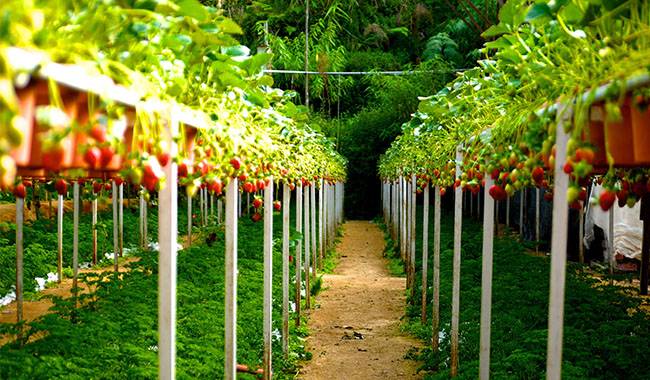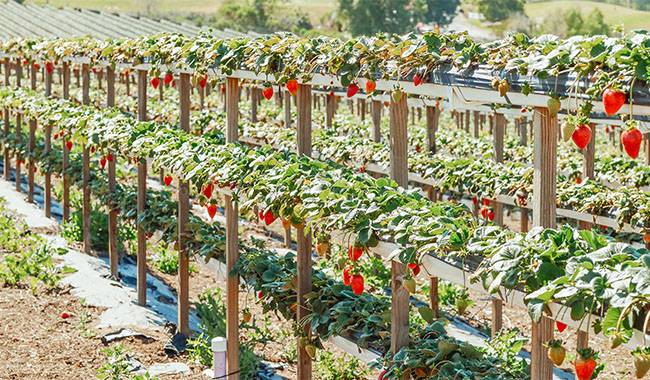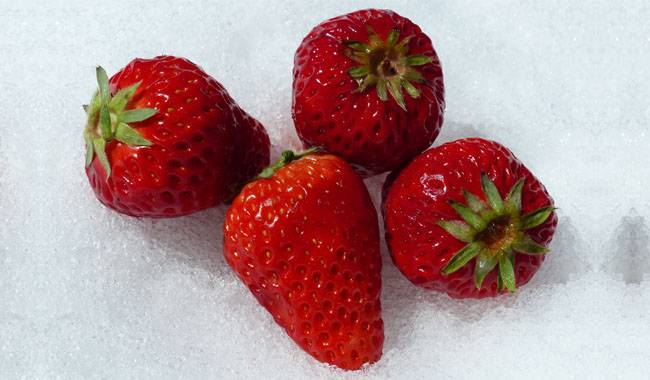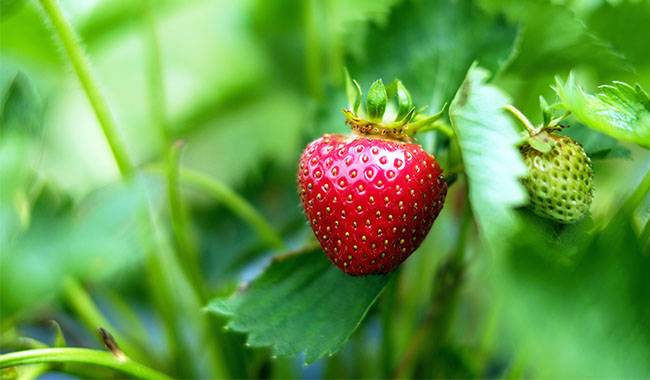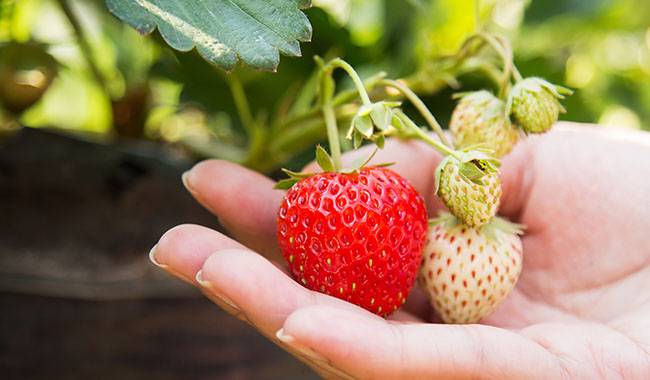
Garden strawberries are a favorite berry not only for children but also for adults. They are delicious, healthy, and good for preserves.
However, many people think that it is not so easy to grow and therefore do not rush to grow a lot of them.
But the fact is that everything depends on the right cultural methods. How to care for strawberry plants? Let’s talk about the secrets of caring for garden strawberries.
ONLY GOOD QUALITY STRAWBERRY SEEDLINGS
The popular saying “Nothing for nothing and very little for a halfpenny” is not new to anyone. This rule applies very well to the selection of strawberry seedlings.
Unfortunately, in order to save money, we often buy poor-quality planting material, thus unknowingly delaying the full harvest of the long-awaited berries, sometimes for a whole year. Quality seedlings are the key to fast plant survival, high potential, and good labor results.
What is worth buying?
When choosing a new garden strawberry variety, be sure to pay attention to the condition of the plants offered. The best choice is an annual seedling grown in a single cup with 2-3 well-developed leaves and a root system of at least 5cm (1.96inch).
What is not worth buying?
Do not buy seeds if they have an obviously unhealthy appearance, signs of disease, and an open root system. Of course, this planting material is cheap, but its survival rate is very low, and the diseases that appear guarantee a significantly weak crop and require a lot of effort to fight them.
CHOOSE THE LOCATION
Strawberries are light-loving cultures, therefore, the proportion of the base point should be a very important basic principle when choosing a location. If you want to get a lot of berries from the plot and have well-developed plants, the bed must be placed strictly from north to south.
In addition, the correct predecessor is important for garden strawberries. In no case should be planted after potatoes or tomatoes (common diseases love them), near or after plums (they are equally strongly affected by weevils and aphids).
Beds for garden strawberries must be chosen after garlic, onions, dill, peas, as well as lupines, vetch, oats, radishes, and marigolds.
Warm beds are also a good place to grow strawberries. Usually, they are prepared in autumn, but if time is wasted, it is possible to do all operations in spring: it is better to fill the structure with manure, compost, ashes, organic residues, old leaves.
Such beds are easier to care for, harvested earlier, and easier to cover in winter.
Remember, garden strawberries like loose soil!
PLANTING YOUNG PLANTS
Now, you have chosen the place and prepared it, you have to plant the seedlings properly. And here are some rules.
- The position of the strawberry bushes relative to each other is important: at least 50cm (19.6inch) in one row and at least 50-70cm (19.6-27.5inch) between two rows, the plants should be staggered. The width of the bed itself planted in two rows can be between 80cm (31.4inch) and 1 m (39.3inch), which provides not only plenty of light for each bush but also good ventilation for the plants (which prevents many diseases and certain diseases) pests), easier access to plants when trimming beards and harvesting. For single-row tillage, the distance between bushes and between rows should be 50cm (19.6inch).
- The timing of sowing plays an important role in subsequent crop conservation and the harvest of the first crops. If sowing in spring, it must be done in time before the beginning of the third decade of May, in summer – the last days of August – the first ten days of September.
Summer to autumn is preferable because this type of sowing requires less maintenance and guarantees the next year’s harvest.
Summer to autumn is preferable because this type of sowing requires less maintenance and guarantees the next year’s harvest. - Before sowing seedlings in the holes, they must be moistened. To do this, place young plants with open root systems (if you still buy them) in water and add 3 drops of HB-101 (you can use Kornevin) per 1 liter of water until the growing shoots leave last 8-10 hours.
Leave the seedlings in water for 10-20 minutes if you put them in plastic cups or 30 seconds if you put them in peat pots. However, you can simply water the plants in the cups liberally with a solution that stimulates root growth an hour before planting.
Now the most important thing is planting seedlings in the holes, you must make sure that the roots of the strawberries do not bend!
To do this, take each plant out of its pot, straighten its root system, and cut off 10cm (3.93inch) of roots, if not, then everything that is bent will rot and the strawberry bushes themselves will fall behind in growth, which will affect the harvest.
In addition, the spine must first be in firm contact with the ground. To do this, either plant them on a mound laid in the hole, flattening the individual roots evenly on the earth bank, or use the wet method – filling the hole with water and gradually pouring the soil substrate directly into the water.
And further. When planting strawberries, you need to check that the seedling heart is at soil level and not higher or lower. If it is found buried, the plant will die; if it is above the ground, it will be consumed.
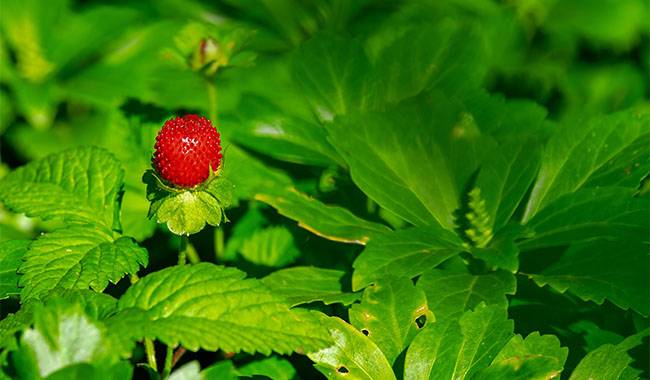
HIGH-QUALITY CARE
Mulch strawberries immediately after planting beds. This technique allows you to retain moisture around the young plants, prevent weed growth and provide them with more nutrients. Further care will be considered depending on the age and time of planting.
First-year
If you sow strawberries in the spring, it is important to remove the flowers that appear on the strawberries so that the bush can form good nutritious plants in the summer. Of course, many of us regret performing this procedure, but it is the key to a good harvest next year.
Also, to strengthen the spring sowing, it is necessary to carry out weekly foliar fertilization (spraying on the leaves, including the lower part) with some pesticide preparations (1 tablespoon per 10 liters of water), perhaps in combination with other nutrient solutions.
Pesticide preparations (0.5 cups per 10 liters of water) and add 10 capsules of fertilizer or nutrient solution preparations once a month.
If strawberries are sown in autumn, the main thing to do is to make sure that the young plants will survive the winter well.
To do this, sow weeds in the aisles of strawberries or mulch the beds with agricultural fiber. Next year, the flowers of this planting are not removed, making the crop monocultures.
The second and third year
The second year of growing strawberries also requires regular feeding, while the first year is even earlier than the beginning of stable warm weather. In the meantime, it is best to use pesticide preparations and but by watering under the plants, using just 2 tablespoons of tablespoons per 10 liters of water.
This technique activates the soil bacteria and starts heating the soil, so it is possible to obtain a strawberry crop a week before. For the same purpose (to get an earlier harvest), you can spray the plants with HB-101 (30 drops per 10 liters of water) and cover the garden with any mulching material.
Throughout the season, three waterings should be done before the whole oviposition, the first – after cleaning off the wilted leaves from the bed, the second – when the flower stalks appear, and the second – when the first flowers appear.
However, if you trust more in folk fertilization methods, then it is better to choose spring watering and instead opt for herbal infusions, horse or chicken manure – these are the most suitable for this culture.
It is important not to introduce it in pure form, but it is important to stick to a ratio of 1-3 parts of water for a week and then dilute it again with water at a ratio of 1:20.
To set the stage for the next harvest, after picking the berries, it is necessary to make a final seasoning, but this time in a herbal dip with hummus, nitrophosphorus, or any other compound fertilizer in 0.5 cups per bush down the drain.
But this is a rule for common strawberry varieties – regenerated varieties require weekly fertilization throughout the season.
Another important step in the spring care of strawberries in their second year of life is to clean the plants from damaged leaves and process the strawberries to keep them free from pests and diseases.
It is done as soon as the weather permits, but it is best not to remove the leaves with a rake or by hand, but to cut them with scissors to avoid damaging the bush.
It is also good to know and measures to combat diseases of miracle berry. For this purpose, it is appropriate to use some pesticides and preparations: a drug that improves the immunity of the plant.
In addition, the strawberry bed should be kept moist from spring to the whole summer! Here are different methods – high-quality regular watering (for plants!) Complete mulching with straw, rotting wood chips, dry weeds, or cut lawn grass; drip irrigation.
The second method is more profitable because it requires no ongoing labor investment and allows for complete absorption of the root zone.
And, don’t loosen up! Strawberry roots are close to the soil surface and don’t like to be disturbed!
PLANTING MANAGEMENT
If well managed, single-fruited strawberry beds can bear fruit in one place for 4 years, but practice shows that it is best not to keep strawberries in the same raised bed for more than 3 years. Regenerated varieties should be kept in one place for no more than two years.
SPECIAL NOTE
Mulching
The importance of mulching in strawberry cultivation cannot be overemphasized. Mulch also prevents berries from becoming wet and protects plants from gray rot as well as from getting rid of and snails.
However, in order for it to be 100% effective, it is necessary to mulch throughout the season and gradually bring a layer of straw or other material to a height of 10-15 cm and release nutrients from it.
To make it more convincing, I will add: in Europe, strawberries and straw are inseparable, and in some places, this culture is called “strawberry of the scarecrow”.
Trimming the beard
Beard trimming is another exciting issue for many amateur gardeners. To harvest a lot of strawberries, you need to remove the beard!
This technique offers more convenience in garden maintenance, easier harvesting, prevention of gray rot, and, more importantly, larger berries. In order to propagate the variety, it is necessary to start a mother plant – from which the flowers are removed!
Pruning after fruiting
After harvesting the disposable variety, it is necessary to prune not only the forks remaining on the berries but also the leaves affected by the disease, as well as the old persistent leaves on the lower layers. If the plant is severely damaged, all leaves should be removed. Regenerating varieties should be treated in the spring.
Recommend you to read “Top 13 FAQ about strawberry plants“




